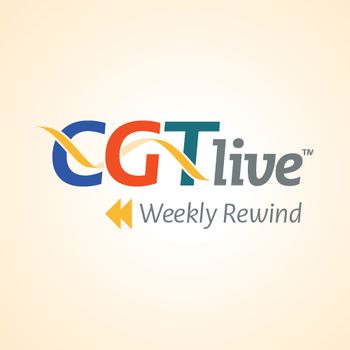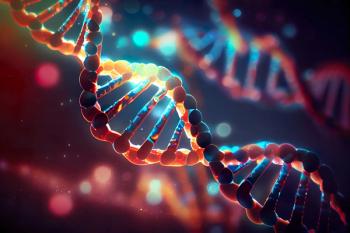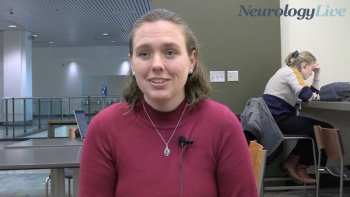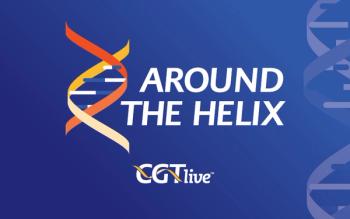
Nusinersen Improves Some Suboptimal Motor Functions Post-SMA Gene Therapy
Updated data from the RESPOND study evaluating Spinraza in patients with SMA after onasemnogene abeparvovec were presented.
Most patients with
These updated data from the RESPOND study (NCT04488133) were presented at the
“Our evolving understanding of gene therapy indicates there may be an opportunity for better outcomes,” study coauthor Crystal Proud, MD, Pediatric Neurologist, Children’s Hospital of the King’s Daughters, said in a statement.2 “Improvements in motor function together with decreases in neurofilament levels seen after treatment with SPINRAZA in RESPOND show that we may be able to further maximize benefits for patients.”
The study enrolled 38 participants dosed for a median of around 230 days as of the data cut of date of November 15, 2022, of these, 29 who reached day 183 were assessed for clinical outcomes. About half (n = 14) were at most 9 months of age at first nusinersen dose and had 2 SMN2 copies (group 1 [G1]), 12 were under 9 months of age with 2 SMN2 copies (G2) and 3 were over 9 months of age with 3 SMN2 copies (G3). All participants were symptomatic at the time of gene therapy dosing.1
WATCH NOW:
Most participants had low ulnar CMAP amplitude (≤1 mV) at baseline as well as investigator-reported suboptimal clinical status in at least 2 domains (93% G1; 92% G2; 33% G3). At Day 183, most participants with suboptimal motor function at baseline reported improvement (92% G1; 91% G2; 100% G3). As a whole, suboptimal swallowing/feeding ability or respiratory function remained unchanged, but there were some reported improvements. HINE-2 scores improved by a mean of 5.4 (standard deviation [SD], 2.6) to reach 8.6 (SD, 3.5) in G1 and by 5.2 (SD, 2.7) to reach 13.5 (SD, 5.8) in G2. Patients unable to sit without support improved by a mean of 6.7 (SD, 6.8) in CHOP INTEND scores in G1 and by 3.6 (SD, 3.9) in G2.
Investigators observed that safety was consistent with nusinersen’s established safety profile, with adverse events (AEs) occurring in 31 of 38 total patients (82%) that commonly included infections/infestations (63%) and respiratory, thoracic, and mediastinal disorders (26%). One AE of mild proteinuriam, which resolved, was determined to be related to nusinersen by investigators in 2 patients. There were 13 (34%) serious AEs deemed unrelated to nusinersen.1
“Biogen is at the forefront of pioneering research aimed at advancing biomarkers to accelerate development of drugs for people living with devastating neurodegenerative diseases like SMA and ALS,” Priya Singhal, MD, MPH, Head, Development, and interim Chief Medical Officer, Biogen, added.2 “Prior to receiving SPINRAZA at the start of RESPOND, we saw that participants had elevated neurofilament levels, as compared to healthy children suggesting ongoing neuronal injury. The RESPOND findings underscore the value of neurofilament as an objective marker for assessing remaining unmet needs in SMA patients who have previously received gene therapy.”
REFERENCES
1. Brandsema JF, Masson R, Proud C, et al. Interim results from the RESPOND study of nusinersen in children with spinal muscular atrophy (SMA) previously treated with onasemnogeneabeparvovec. Presented at: 2024 MDA Clinical and Scientific Conference; March 3-6; Orlando, FL. Psot #S111
2. New Biomarker Data Add Further Evidence Supporting the Potential Benefit of SPINRAZA® (nusinersen) in Infants and Toddlers with Unmet Clinical Needs after Gene Therapy. News release. Biogen. March 6, 2024. https://www.globenewswire.com/news-release/2024/03/06/2841312/0/en/New-Biomarker-Data-Add-Further-Evidence-Supporting-the-Potential-Benefit-of-SPINRAZA-nusinersen-in-Infants-and-Toddlers-with-Unmet-Clinical-Needs-after-Gene-Therapy.html
Newsletter
Stay at the forefront of cutting-edge science with CGT—your direct line to expert insights, breakthrough data, and real-time coverage of the latest advancements in cell and gene therapy.



































